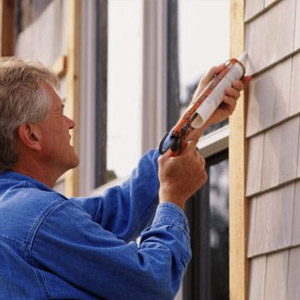With some simple home discovery, maintenance, and proactive actions the EPA estimates that homeowners can save up to 20% on home heating and cooling costs. That’s quite a bit of money that could be used toward something else. Many homes exhibit classic energy inefficiencies that allow climate controlled air to escape and/or outside air to enter, causing more strain on our HVAC systems and elevated utility bills. Additionally air leakage can also contribute to moisture problems and possibly health issues or structural durability.
You can find these leaks yourself by beginning your visual inspection on the outside of your house. Look for locations where two different building materials meet. This would include:
- Corners
- Water Faucets
- Where siding connects to objects such as chimneys or trim
- Where the foundation meets other building materials
On the inside of your home investigate areas where there are cracks, separations, or gaps:
- Electrical outlets
- Door and window frames
- Electrical and gas entrances
- Around dryer vents
- Baseboards
- Surrounding window and door openings
- Around weather stripping
- Fireplace dampers
- Attic hatches
- Cable and Telephone entry lines
- Vents and fans
At these locations look for gaps, missing caulking or seals, or locations where you can see daylight through openings. Shake windows. If they rattle it is likely air is escaping around them. Once found, these leaking locations will be caulked to seal them off.

Caulk is a flexible material used to seal cracks, gaps, and separations between stationary building materials separated less than 1/4 inches. For components that move, such as doors and windows, we suggest using weatherstripping instead of caulk. Most caulking compounds come in disposable cartridges and can be purchased at local stores. There are a variety of caulking compounds that vary in strength and capabilities as well as price. Check out more in depth information in caulking at energy.gov.
Applying caulk is not hard to do. Simply follow the instructions on the product and follow some basic tips.
- Thoroughly clean all surfaces to be caulked. Remove any old caulk or paint using a putty knife or screw driver, and make sure the area is completely dry before proceeding.
- Align the caulk gun at a 45 degree angle so the material is deposited into the opening.
- Apply caulk in a consistent and steady stream. Avoid stops and restarts.
- If excess sealant oozes from the opening simply use the knife to put it back in.
- Apply caulk generously to guarantee an airtight fit.
The optimal time to apply caulk is during dry weather when the temperature is over 45°F. A warm and dry environment allows the caulk to properly adhere to all surfaces. Check out our video below that shows you exactly how to caulk, and put any tips or tricks in the comments below.








Comments are closed.